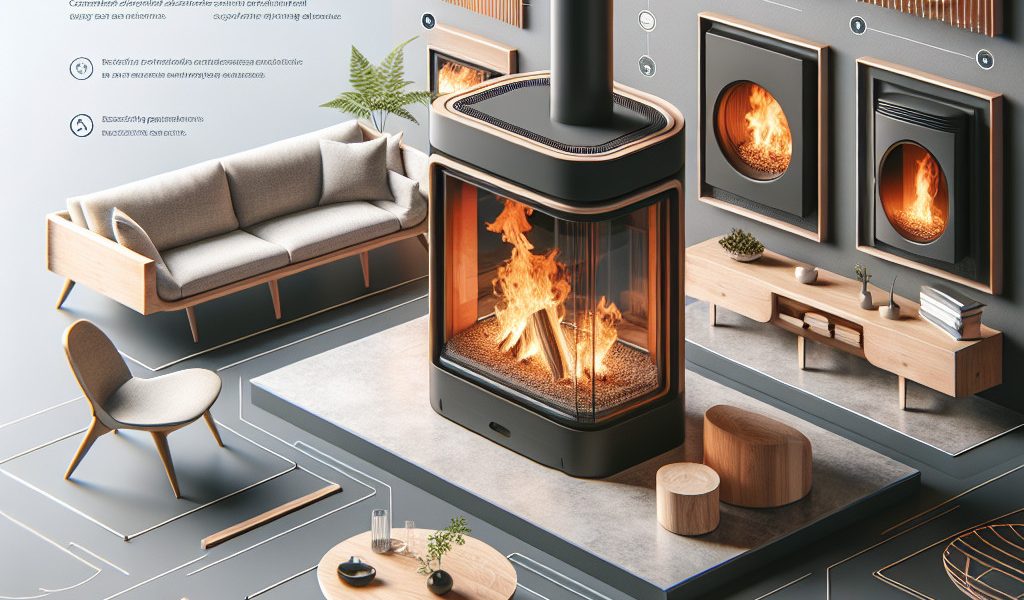Eco-Friendly Elegance: Discover Designer Wood Stoves as a Stylish & Sustainable Upgrade
What is a designer wood stove?
A designer wood stove is a heating device that runs on wood, but which differs from traditional models by its contemporary and innovative aesthetic. Designed to fit harmoniously into modern interiors, these stoves combine energy performance, respect for the environment and elegance. The SEGUIN brand offers a wide range of designer wood stoves in steel, ceramic or earthenware, with models signed by the famous Danish brand HWAM.
The advantages of the designer wood stove
Optimized yield
Designer wood stoves offer higher efficiency than traditional models thanks to advanced technologies such as double combustion or the post-combustion system. These devices make it possible to extract maximum energy from the fuel and reduce polluting emissions. The efficiency can thus reach 80% or more, compared to 50-60% for old devices.
Ecological and economic aspect
Using wood as a source of energy has several environmental advantages. It is a renewable, local and inexpensive resource compared to fossil fuels (gas, fuel oil). In addition, the combustion of wood emits little CO2 and thus contributes to the fight against global warming. Finally, designer wood stoves benefit from a Flamme Verte label, guaranteeing their energy and environmental performance.
Integration as a decorative element
Designer wood stoves are designed to adapt to the varied styles of contemporary interiors. They come in different materials (steel, ceramic, earthenware) and shapes (round, rectangular, suspended) to meet everyone’s tastes and needs. The HWAM models offered by SEGUIN are particularly aesthetic with their clean lines and careful finishing.
Practical aspects: simplified installation and easy maintenance
The installation of a designer wood stove is generally simpler than that of a traditional model thanks to a reduced weight and a design adapted to modern constraints (reinforced insulation, restricted spaces). In addition, these devices often have a top or rear smoke outlet which facilitates their connection to the existing duct.
In terms of maintenance, designer wood stoves are equipped with self-cleaning windows which limit clogging and allow a clear view of the flames. Some models also have an automatic combustion air regulation system which optimizes combustion and reduces soot deposits. Finally, access to internal components is facilitated for regular and efficient cleaning.
Comparison between classic wood stoves and modern designs
To help you in your choice, here is a comparison of the main criteria to take into account:
- Aesthetic : Designer wood stoves are more suited to contemporary interiors with their sleek shapes and careful finishing. Classic models have a rustic charm that can suit certain styles of living.
- Yield : Designer wood stoves generally offer higher efficiency thanks to the advanced technologies they integrate (double combustion, post-combustion). They consume less fuel and pollute less than traditional devices.
- Price : The cost of a designer wood stove is often higher than that of a classic model due to its sophisticated design and the materials used. However, this investment can be profitable in the long term thanks to the energy savings made.
- Maintenance : Maintenance of designer wood stoves is generally made easier by devices such as self-cleaning glass or automatic combustion air regulation. This saves time and improves user comfort.
In conclusion, designer wood stoves represent a modern and ecological alternative to classic models. They offer optimized performance, a neat aesthetic appearance and practical advantages such as simplified installation and easy maintenance. If you are considering purchasing a wood stove, do not hesitate to discover the range offered by SEGUIN and its partners, in particular the HWAM models in steel, ceramic or earthenware.
